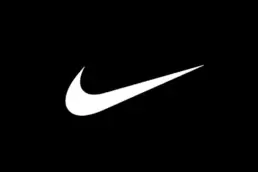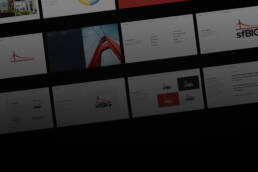I was recently asked to help one of my clients undergo a brand evolution. Their brand identity did, and still does, resonate strongly with their ideal audience. The goal was to incorporate new design elements while staying true to the brand’s essence and personality.
This idea of elevating your brand with intention is something most businesses will face given enough time. You’ve probably even seen this happen with some of your favorite brands, like Starbucks and Microsoft. Regardless of the company, one question will always pop up when adding something new to your branding: “How do we elevate a brand without breaking what’s currently working?”
Let’s answer that question. Here are 10 ways to continually update your branding without straying from your core brand identity.
Table of Contents
01. Establish Core Brand Elements
Core brand elements are the foundation of your company. In terms of people, they’re the unique nuances that make who you are. In branding, your core brand elements are things like your values, your personality, and your visual identity. Most companies establish these foundational pieces early on. If you are evolving your design, now is the time to revisit those core identity elements. It’s important to ensure you’re clear on what they are before adding new designs, fonts, or colors to your brand. This is true whether the element you’re adding will only be used on a one-time social media campaign or across all your marketing going forward.
02. Maintain Brand Guidelines
Once you’re clear on your core brand elements – document them. Establish rules for consistent usage of core elements to preserve your brand identity. Remember, a design choice that clashes with your identity may confuse your audience. Setting ground rules for what must never be modified allows you to define all other areas of your branding that can be played with. If you’re not sure how to communicate brand guidelines and safe areas to experiment with your team, read this article. In it, I explain how to present your brand guidelines to your organization. You can also use it to present any new elements and how they fit into your brand’s visual story. This will ensure teams can effectively follow your brand guidelines.
03. Use Consistent Visual Language
What brand comes to mind when you see a black checkmark?

If you guessed Nike, you are not alone. The black checkmark, which is legally called The Swoosh, is a core brand element for Nike. They’ve been consistent in using it since 1971. Maintaining consistency is key to having strong brand recognition with consumers. It’s important to stay consistent in key areas that stick with consumers, like your imagery style, fonts, or color palette.
04. Engage in Continuous Design Experimentation
The rise of social media has pushed brands to continuously evolve. We see marketing teams pushing the branding boundaries to keep up with trends. I’m not against that. I believe trends have a place alongside maintaining brand standards. Brands should regularly try new designs and ideas to see what sticks. We can learn from both successes and failures.

An example of rebranding gone wrong is Gap, which spent $100 million on a new logo, only to use it for 6 days due to significant backlash.
05. Leverage Design Trends Tastefully
On that same note, be careful what you add to your branding. While it’s important to stay relatable and fresh, trends come and go. If you follow my annual Design Trends series, you’ll see how quickly public opinion shifts on what’s trendy. Chasing trends doesn’t aid long-term brand recognition or customer loyalty. Don’t hop styles simply because others in your industry do. Choose trends that align with your brand personality and that make sense. If a style seems like a stretch, pass on it.
06. Evolve Design Styles Gradually
When you are ready to add new elements to your branding, take it slowly. Introduce new designs gradually so your brand remains familiar to current customers while still feeling fresh. You may also opt to roll out new elements on digital platforms first. This gives you time to test people’s reactions before committing to updating more costly physical assets.
07. Gather Feedback From Stakeholders
A great way to know what new elements or trends are right for your brand is to collect feedback. Get input from customers, partners, and people in your ideal demographic who are not customers yet. They are your best visionaries. Use their feedback to understand how your branding is being perceived. Find out what their favorite design styles are. Basing your design updates on consumer data will make your branding stronger.
Intel decided to drop the ring and simplify its iconic logo with enhanced symmetry, balance, and proportion.

08. Adapt to Changing Technology
As you consider iterations to branding, consider elements that help you acclimate to new technologies. AI is a great example of something brands are quickly being forced to address. Since the release of ChatGPT a year ago, thousands of new AI products have been released. The general public is following these releases in awe. They’re as excited and engaged in AI as the companies harnessing them. Technology-forward brands are starting to use AI personas that can engage and answer questions from consumers. Some even have their own social media accounts. They’re being ingrained into company websites and marketing campaigns.
However, many brands don’t have a character in their branding that they can easily shift into this role. They’re being forced to ask themselves how to create a persona that embodies their brand identity. Then they have to tackle how that persona can communicate while representing the brand. This is just one example of how your branding must adapt to changing technology. There are many more examples that your team must determine how to evolve alongside.
09. Regularly Evaluate the Effectiveness of Your Brand Identity
You may not want to hear this after going through all the trouble of finding, designing, refining, and implementing new elements into your brand. Still, it must be said. The most important step to ensure you are evolving your brand effectively is to continuously measure how well your branding is performing. A/B test your designs. Compare results against expectations. Compare new campaigns to past campaigns using previous design iterations. Make adjustments based on results. And lastly…
10. Refine Your Branding Based on Business Needs
Often business objectives evolve faster than branding. As you’re evaluating your iterations, stop to ensure your branding supports current business goals and strategies. I see this need most when brands identify new consumer demographics or when new products launch. It’s important to update branding to support these new objectives without rebranding and losing what your core customers love most about you.
Don’t Be Afraid to Update Your Branding
Your customer’s preferences are constantly evolving. Too often, brands stay stuck in the status quo. They’re so afraid to mess with what’s working, that they miss out on what could work better. Don’t let yourself miss out. Experiment, fail, fail better, and find what works for you. If your team has been thinking about a brand evolution this year, let’s define it. I would love to help you.
Borja Zamora
A Barcelona native but San Francisco based, Borja explores digital marketing and design through articles, images, and quotes.
Related Posts
April 30, 2024
sfBIG: A Non-Profit Website Re-Design & Branding Case Study
After successfully rebranding several non-profits, I was honored to be asked to…
March 22, 2024
Lessons From The Worst Rebrands in History
What were the worst rebrands in history? Let’s look at 7 lessons in bad…
February 20, 2024
Revitalized Icons: 5 Of The Best Rebrand Examples
Dive into 5 of the best rebrand examples ever, with examples of rebranding…

